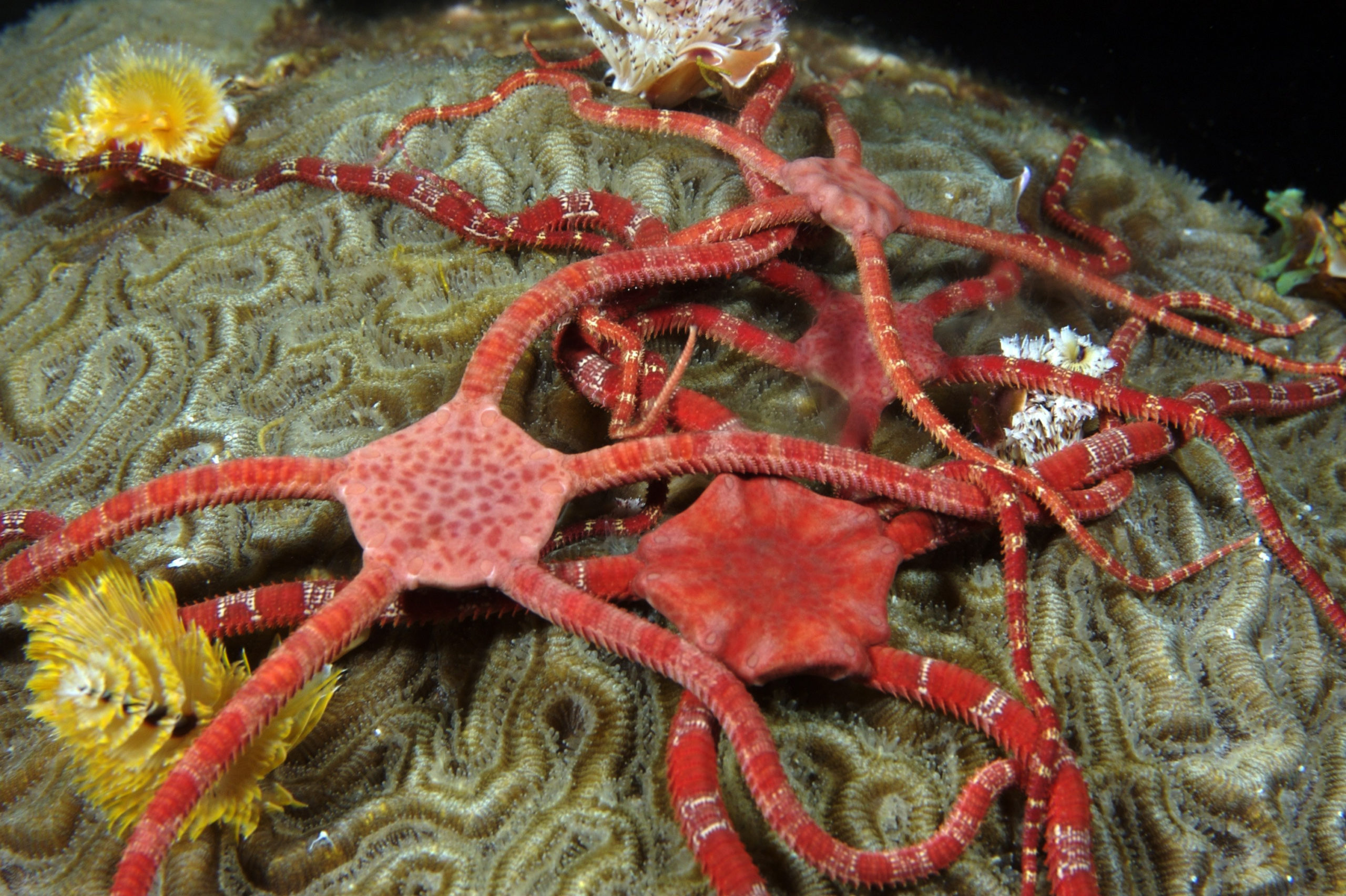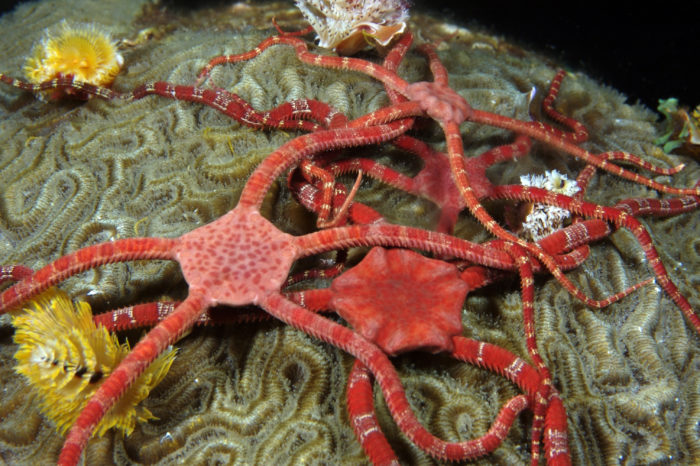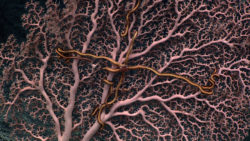
Sea Wonder: Brittle Star

Brittle stars sitting a top a brain coral in Flower Garden Banks National Marine Sanctuary. Photo Credit: G.P. Schmahl/NOAA
You might think a blog about brittle stars is a blog about starfish, but these animals, while similar to starfish, are quite different!
Description
Like starfish, brittle stars are echinoderms but are in the class Ophiuroidea rather than Asteroidea. Brittle stars have five long, skinny arms and a central disk containing a calcium carbonate skeleton and all of their internal organs. As long as the central disc is intact, the brittle star can lose any or all of its arms and grow them back. Their ability to regenerate arms is most useful when predators take hold of their arms as brittle stars can detach their arms to escape. In addition, their arms twist and turn which help them travel along the seafloor. The largest brittle star arms can grow to be 24 inches long and are usually grey or brownish-red in color, but there are other variations depending on the species.
Diet & Habitat
Worldwide, there are more than 2,000 known species of brittle stars that occupy nearly all of the world’s oceans, with as many as 73 in the Arctic alone. Some species live in shallower waters while others can live as deep as 11,000 feet! They usually live on sessile, or immobile, animals on the ocean floor like spiny sponges and coral reefs.
Brittle stars are known as seafloor ecosystem engineers for their role in reshaping sediment on the ocean floor when they twist and coil their arms to move, which affects the distribution of other species. In addition to being ecosystem engineers, brittle stars are important in the food web as they provide nutrition to fish, sea stars, and crab predators. Their own diets include small organisms and detritus which they can either filter feed out of the water column or use their mouths (which have five jaws) on the underside of their disc to actively catch their prey.
Life History

A brittle star coiled around a deep-sea pink coral in the Northwestern Hawaiian Islands. Photo Credit: NOAA Office of Ocean Exploration and Research 2015
Some species of brittle stars reproduce sexually while others clone themselves by fission, and some species are capable of both. They start their lives as eggs, which hatch to become larvae that float along in the water column until they settle on the seafloor. They will become juvenile brittle stars within a matter of months and are generally mature at two or three years. Their lifespans reach a maximum of around five years.
Threats & Conservation
Brittle star populations are generally abundant and stable, but climate change, pollution, and habitat destruction threaten their population health.
